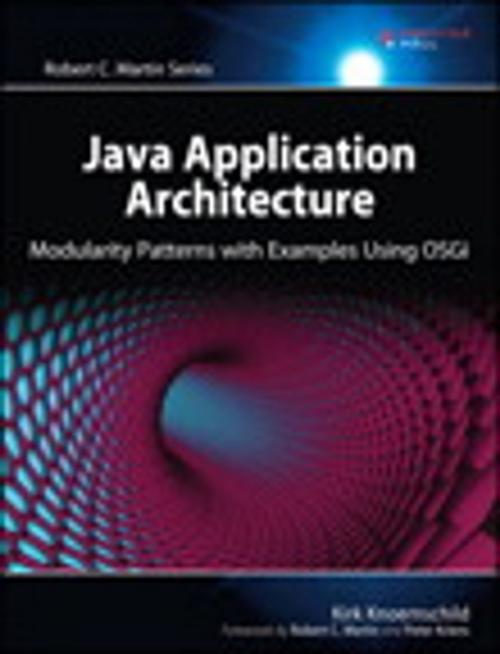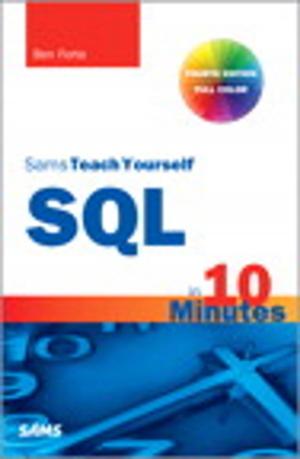Java Application Architecture
Modularity Patterns with Examples Using OSGi
Nonfiction, Computers, Programming, Object Oriented Programming| Author: | Kirk Knoernschild | ISBN: | 9780132874748 |
| Publisher: | Pearson Education | Publication: | March 16, 2012 |
| Imprint: | Addison-Wesley Professional | Language: | English |
| Author: | Kirk Knoernschild |
| ISBN: | 9780132874748 |
| Publisher: | Pearson Education |
| Publication: | March 16, 2012 |
| Imprint: | Addison-Wesley Professional |
| Language: | English |
–From the Foreword by Robert C. Martin (a.k.a. Uncle Bob)
This isn’t the first book on Java application architecture. No doubt it won’t be the last. But rest assured, this title is different. The way we develop Java applications is about to change, and this title explores the new way of Java application architecture.
Over the past several years, module frameworks have been gaining traction on the Java platform, and upcoming versions of Java will include a module system that allows you to leverage the power of modularity to build more resilient and flexible software systems. Modularity isn’t a new concept. But modularity will change the way we develop Java applications, and you’ll only be able to realize the benefits if you understand how to design more modular software systems.
Java Application Architecture will help you
- Design modular software that is extensible, reusable, maintainable, and adaptable
- Design modular software today, in anticipation of future platform support for modularity
- Break large software systems into a flexible composite of collaborating modules
- Understand where to place your architectural focus
- Migrate large-scale monolithic applications to applications with a modular architecture
- Articulate the advantages of modular software to your team
Java Application Architecture lays the foundation you’ll need to incorporate modular design thinking into your development initiatives. Before it walks you through eighteen patterns that will help you architect modular software, it lays a solid foundation that shows you why modularity is a critical weapon in your arsenal of design tools. Throughout, you’ll find examples that illustrate the concepts. By designing modular applications today, you are positioning yourself for the platform and architecture of tomorrow. That’s why Uncle Bob is dancing.
–From the Foreword by Robert C. Martin (a.k.a. Uncle Bob)
This isn’t the first book on Java application architecture. No doubt it won’t be the last. But rest assured, this title is different. The way we develop Java applications is about to change, and this title explores the new way of Java application architecture.
Over the past several years, module frameworks have been gaining traction on the Java platform, and upcoming versions of Java will include a module system that allows you to leverage the power of modularity to build more resilient and flexible software systems. Modularity isn’t a new concept. But modularity will change the way we develop Java applications, and you’ll only be able to realize the benefits if you understand how to design more modular software systems.
Java Application Architecture will help you
- Design modular software that is extensible, reusable, maintainable, and adaptable
- Design modular software today, in anticipation of future platform support for modularity
- Break large software systems into a flexible composite of collaborating modules
- Understand where to place your architectural focus
- Migrate large-scale monolithic applications to applications with a modular architecture
- Articulate the advantages of modular software to your team
Java Application Architecture lays the foundation you’ll need to incorporate modular design thinking into your development initiatives. Before it walks you through eighteen patterns that will help you architect modular software, it lays a solid foundation that shows you why modularity is a critical weapon in your arsenal of design tools. Throughout, you’ll find examples that illustrate the concepts. By designing modular applications today, you are positioning yourself for the platform and architecture of tomorrow. That’s why Uncle Bob is dancing.















